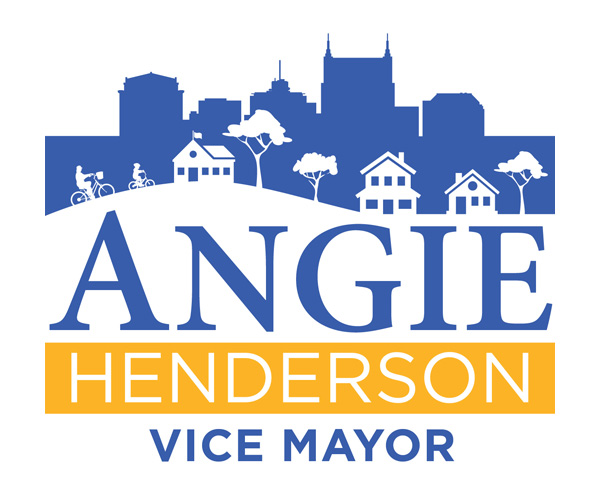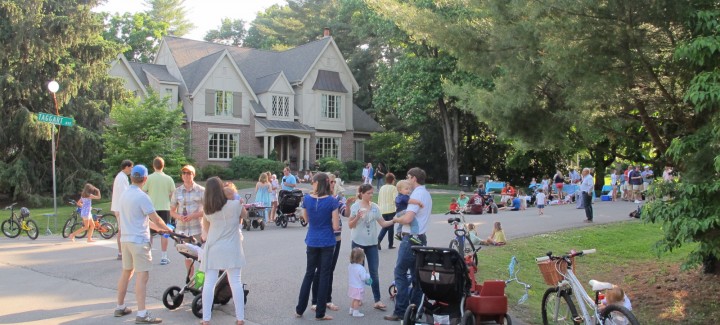In every other major city in which I have lived, I have been a daily transit rider. In San Francisco, I rode the bus (or the cable car!) to and from work 5 days a week. In New York, I rode the subway everywhere. In Philadelphia, I rode the train from the suburbs to downtown. When I was a child and lived on West End for a few years, I rode the bus with my mom and dad to  the downtown library on Saturdays to attend the Tom Tichenor puppet shows and check out our weekly books. I remember those outings so fondly and vividly, and not just the library part, but also the awesome taking-the-bus part. I wish I could ride the bus more often in Nashville, but with infrequent service, too few crosstown routes, and no sidewalk to get me safely to the closest bus line (at the intersection of Highways 100 and 70), it doesn’t make sense for me. I drive my mini-van almost everywhere I go, and as the infamous bumper sticker reminds us: you’re not in traffic, you are traffic. The best solution to Nashville’s traffic problem is a truly multi-modal transit system.
the downtown library on Saturdays to attend the Tom Tichenor puppet shows and check out our weekly books. I remember those outings so fondly and vividly, and not just the library part, but also the awesome taking-the-bus part. I wish I could ride the bus more often in Nashville, but with infrequent service, too few crosstown routes, and no sidewalk to get me safely to the closest bus line (at the intersection of Highways 100 and 70), it doesn’t make sense for me. I drive my mini-van almost everywhere I go, and as the infamous bumper sticker reminds us: you’re not in traffic, you are traffic. The best solution to Nashville’s traffic problem is a truly multi-modal transit system.
Here is where I stand on transit:
Without a comprehensive, actionable, multi-modal transportation plan, including sidewalks, protected bike lanes, and greenways, Nashville’s economy and quality of life will be significantly diminished by our growing traffic problem. Addressing this issue will have to be done both locally and regionally. Building more highway lanes and widening major streets doesn’t solve the problem, rather it induces demand and makes the problem worse. It is encouraging to see that TDOT and Metro Public Works are increasingly focused on the multi-modal picture of transportation rather than exclusively on road building.
The Regional Transit Authority in partnership with the Metropolitan Planning Organization provides the frame work for regional transportation planning and funding. 54% of the people in the Nashville/Clarksville MSA are working in a county different than the one in which they live, so we must address regional transit by expanding coach-style buses and rail services. Partnering with surrounding counties to encourage mixed-use, transit-oriented development (to include housing) along the Music City Star rail line, for example, and doing the same in certain corridors in Nashville will keep communities connected and more cars off the road.
A strategic plan for MTA is long overdue, but I am optimistic about the new leadership of Stephen Bland and the nMotion planning process that is finally underway, which will build on the land-use planning work of NashvilleNEXT, as land-use planning and transit success are inextricably linked. I hope that all riders as well as non-riders (or would-be riders) and local employers and property owners will be actively engaged in the nMotion process. Take the next nMotion “trade offs” survey here.
MTA ridership is climbing consistently with 24% of current riders having started using the system in the last year. That’s good news, and we need to support and enhance that trend with the real-time transit app, better marketing and improved access and connectivity. Currently, MTA ridership is made up of 68% dependent riders and 32% choice riders. To address traffic issues, we must focus on increasing the choice rider percentage.
Transit is an important service for seniors and young people, but only 3% of MTA riders are over 65 and only 6% are under age 18. In a city of our size with our demographics, those percentages should be much higher, and this speaks to the fact that seniors and young people cannot not safely reach transit stops because of lacking sidewalk and crosswalk infrastructure.
With the current bus system still operating far below capacity, we must make more sidewalk connections to transit, and we must dignify the transit rider with clean shelters and safe crossings—people should not have to stand and wait in ditches inches from speeding cars and dash across 5 lanes of traffic to be able to ride the bus.
Near term initiatives/partnerships could include:
1) increasing and marketing transit service for special events (Predators games, 4th of July Fireworks, etc);
2) increasing park-and-ride options within suburban areas by partnering with local churches and shopping areas for parking; and
3) expanding the MNPS/MTA partnership to include free rides for middle schoolers in addition to high schoolers.
These are just a few of the small gains/improvements that should be considered as part of the larger county-wide and regional puzzle. In the end, the funding is the biggest piece and will be the most difficult part of the conversation, but I think Council can look to the successes of peer cities like Salt Lake City to see how they have communicated that increasing transit funding is crucial to maintaining and enhancing a city’s economy, health, affordability, and quality of life.

